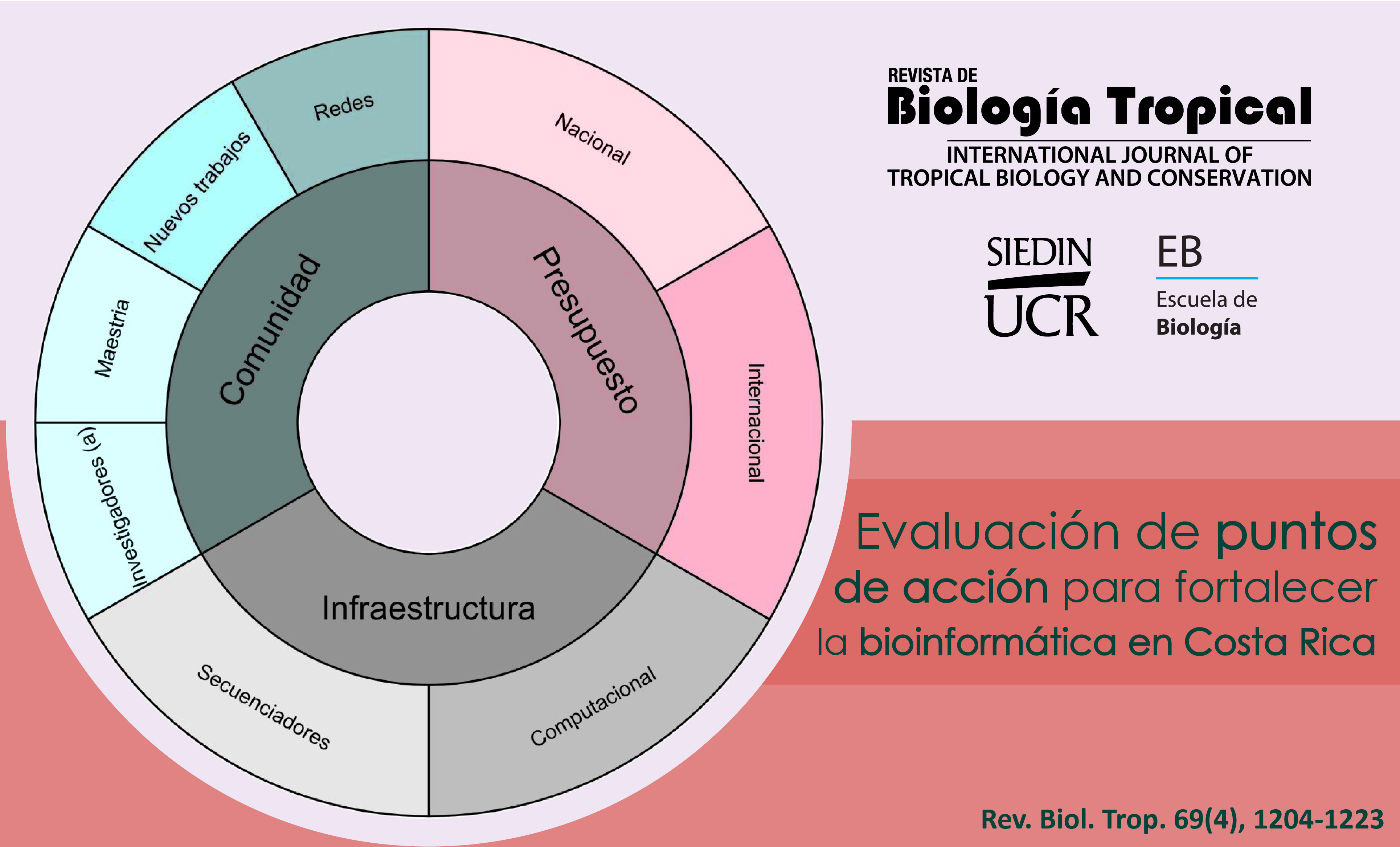Abstract
Introduction: The scientific discipline of bioinformatics has innovative applications for human societies. Costa Rica, small in size and population compared to other Latin American countries, has been progressively adopting the discipline. Recognizing progress can help us determine where we want to go as a country, as well as how we can contribute to the Latin American region. Objective: This manuscript reviews the impact of bioinformatics research in Costa Rica, the application of the science, the challenges and opportunities in its development, and its potential contribution to society. Methods: We evaluate progress in this research area, so we look for data from publications and sequence repositories, as well as information on training activities, networks, infrastructure, web pages and funding sources. Results: We have seen important advances since 2010, including an increase in training opportunities and the number of publications, significant contributions to the sequence databases and connections through networks. However, certain areas, such as critical mass, mapping of research groups, and funding require more attention. Conclusions: We suggest that to benefit from bioinformatics applications, three key aspects must be strengthened: the scientific community, the research infrastructure, and funding opportunities. The scientific community and its sponsors should promote bioinformatics-based research, invest in the training of graduate students, increase professional training, create career opportunities in bioinformatics, and promote international collaborations through networks. The impact of such investment would be the development of ambitious but feasible projects and extended collaborations within the Latin American region. This would allow significant contributions to be made to address global challenges and the application of new approaches to research, innovation and knowledge transfer for the development of the economy, always considering the ethics of research.
##plugins.facebook.comentarios##

This work is licensed under a Creative Commons Attribution 4.0 International License.
Copyright (c) 2021 Revista de Biología Tropical







